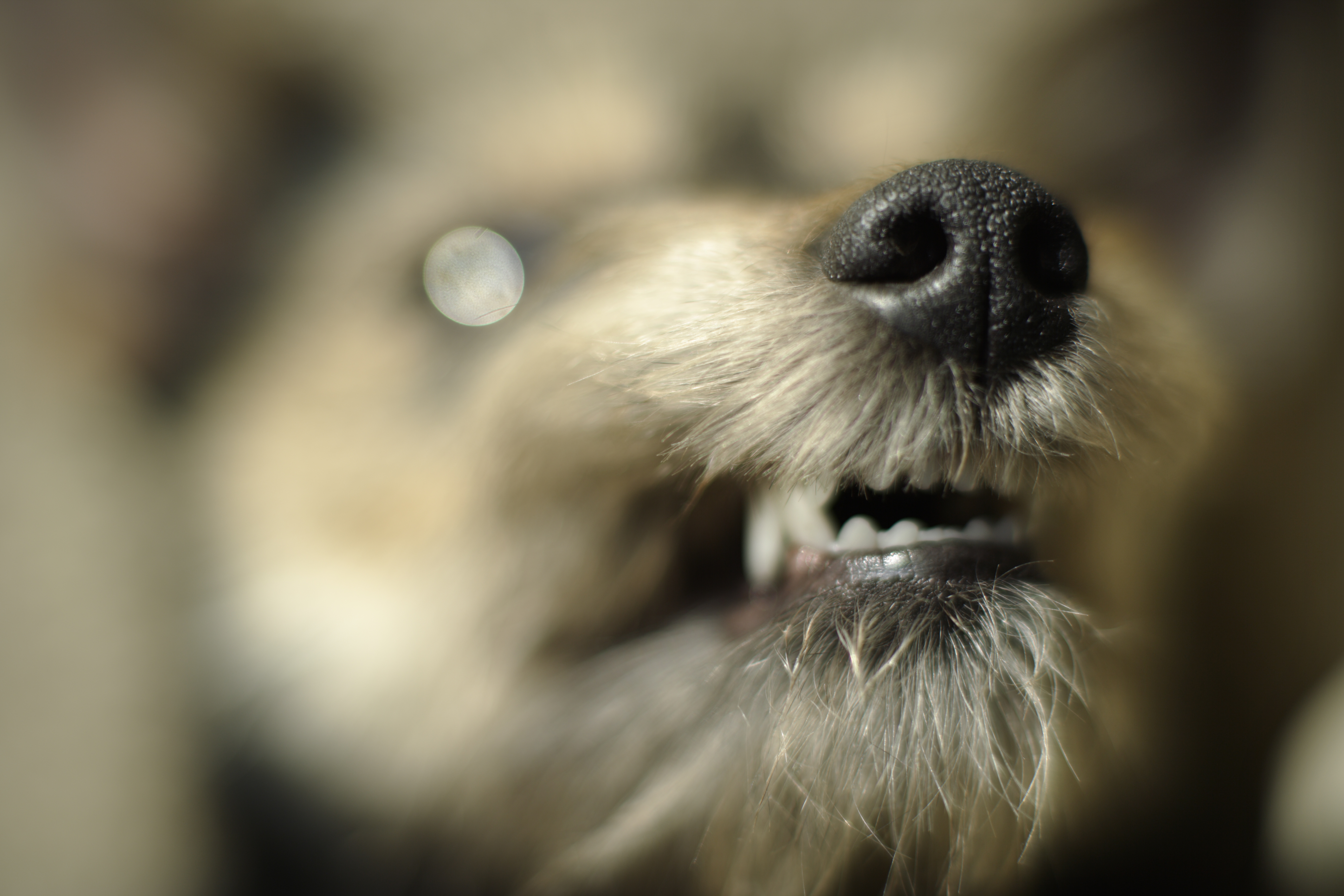5 things I wish people knew about aggressive and anxious dogs
Behaviorist Helen Masters shares her thoughts on public misconceptions

I have more than 20 years’ experience working with dogs, and am a fully qualified dog behaviorist, rehabilitator and trainer. Over the years, I have worked with hundreds of dogs with anxiety, dogs showing aggression and reactive dogs.
They often get a bad wrap and this shouldn’t be the case as many of them are suffering and are trying to communicate that something is wrong. Here are the things I wish people knew about anxious and aggressive dogs...
1. There are very few truly aggressive dogs
By that I mean out-and-out attacking, biting, fighting dogs that wish to cause people or other dogs harm.
Aggression is a word used far too broadly to describe a dog that barks on the sight of another dog or person, lunges at them or growls. Many of these dogs are usually scared, anxious or suffering from past trauma at the hands of people or another dog.
Too many people judge a dog and their owners when they see these trigger behaviors, and I wish people would be kinder and more understanding instead of judgemental and critical. Their eyes only see the behavior; they do not know the cause behind the actions.
The dog’s behavior is a signal that something in their world is not right, that drives them to act out in ways we perceive as aggressive or anxious. It's a plea for help and a sign that they are struggling to cope with their environment.

2. Anxiety, aggression and reactivity manifest in many ways
If you asked the majority of people to describe an aggressive or anxious dog, they would, no doubt, list the usual signs of stress; growling, snapping snarling and lunging or hiding, shaking and soiling themselves.
Get the best advice, tips and top tech for your beloved Pets
In fact, some anxious dogs can display hyperactive and boisterous behavior, with excessive barking, licking, mounting of other dogs, which could be construed by the inexperienced eye as badly behaved.
Likewise, an aggressive dog that has issues with people or dogs can show little in the way of the obvious signs, but can roll over on their backs, smile, give whale eye, show avoidance and hiding behavior before they eventually snap.
3. Dogs experience a range of emotions
These emotions include including fear, anxiety, excitement, happiness, and sadness. However, unlike humans, dogs do not have the same level of cognitive control over their emotions.
This is largely due to the differences in brain structures and the level of cognitive development between species. The canine brain, while capable of experiencing a wide array of emotions, does not have the same capacity for self-regulation as the human brain. In fact, it is thought that dogs have the capacity of a two-year-old toddler when it comes to managing their emotions.
The limbic system, which is responsible for emotional regulation, is less developed in dogs than in humans. This part of the brain includes the amygdala, hippocampus, and hypothalamus, which process emotions and regulate responses to stimuli.
In dogs, the amygdala is highly reactive and less inhibited by the prefrontal cortex, which is responsible for higher order thinking and self-control in humans. As a result, dogs are more likely to react impulsively when they experience strong emotions. This is why impulse control is taught from a very young age and conditioned as it helps them to focus and cope.

4. Dogs can benefit from interventions
Just as humans sometimes need support to manage their emotions, dogs can benefit from interventions that help them cope with stressors and triggers. Understanding and addressing the root causes of a dog's emotional reactions is essential in helping them lead a balanced and happy life.
There is currently a huge stigma around dogs being prescribed anxiety medication. Again, if it were a human they would have the benefit of both medication and counselling, which is the equivalent of behavior modification in dogs.
There needs to be a more open-minded approach in this respect – particularly when the fear, anxiety or aggression is inhibiting the dog from learning any behavioral modification due to being so limbic and shut down.
5. Dogs can be trained and conditioned to be aggressive
Many people forget this. Although you may think of working dogs, such as police or army dogs, these dogs have been conditioned to behave in a certain way when commanded to do so in front of a stimuli that they have been trained to react to. This is a structured approach and therefore not a natural state of being for the dog.
The other aspect to this, which we see all too frequently in the news, is XL American Bullies being mixed with another guarding breed. They then have a genetic mixture of known guarding breeds and are taught to be aggressive to people, dogs or anything that moves.
Sadly, this is not the true nature of the XL Bully, but adding another breed into the genetic mix and teaching them cruelly and aggressively to behave in a certain way, has led to situation we are in today. This can be true of any breed of dog and its time we pointed the finger at the other end of the lead in this respect.
Read next: 8 reasons why your dog is anxious and 12 signs of aggression in dogs.
Edited by Georgia Guerin.
This feature was last updated in May 2025 by Helen Masters.

Helen Masters is a fully qualified dog behaviorist, rehabilitator and trainer, and has more than 20 years’ experience working with dogs. She is a Kennel Club Accredited Trainer, and has a wide range of canine and animal qualifications and affiliations.
Helen also breeds mastiffs and has been a regular attendee at Crufts with her dog Neville. In her spare time, Helen also writes all about dogs for PetsRadar’s sister title, Horse & Hound.
